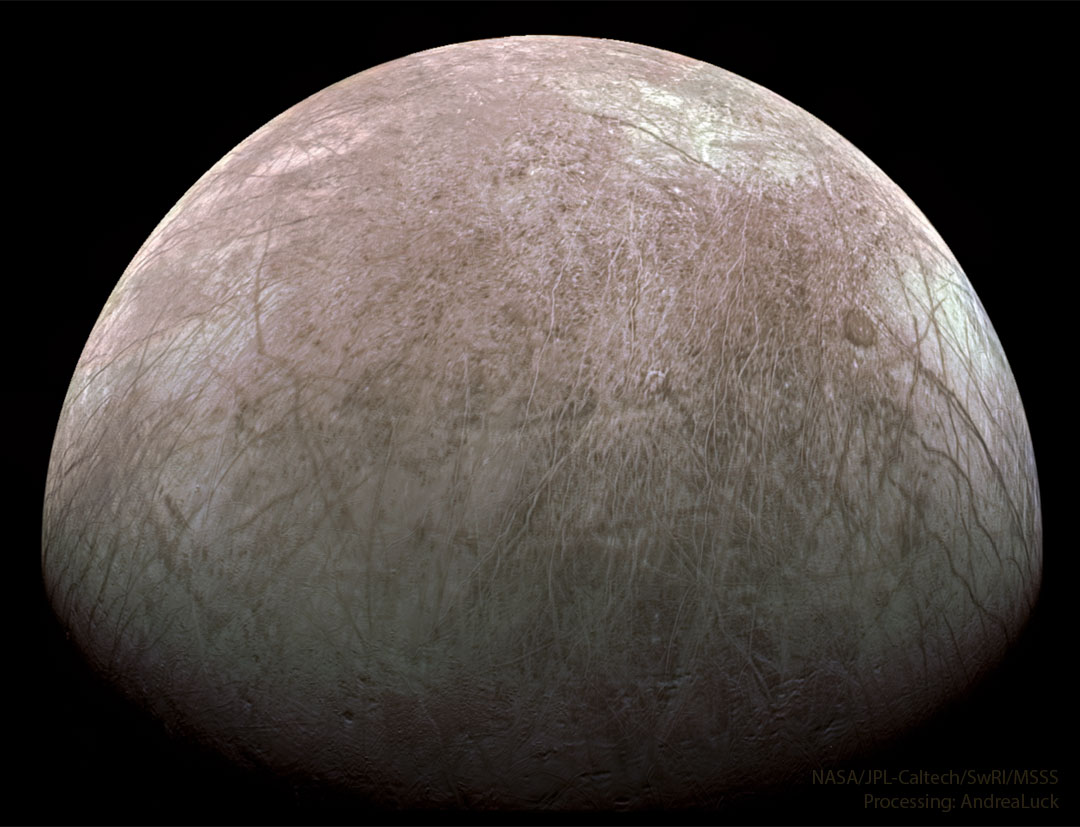2022年10月3日
Jupiter’s Europa from Spacecraft Juno
Image Credit & License: NASA, JPL-Caltech, SwRI, MSSS; Processing: Andrea Luck
Explanation: What mysteries might be solved by peering into this crystal ball? In this case, the ball is actually a moon of Jupiter, the crystals are ice, and the moon is not only dirty but cracked beyond repair. Nevertheless, speculation is rampant that oceans exist under Europa’s fractured ice-plains that could support life. Europa, roughly the size of Earth’s Moon, is pictured here in an image taken a few days ago when the Jupiter-orbiting robotic spacecraft Juno passed within 325 kilometers of its streaked and shifting surface. Underground oceans are thought likely because Europa undergoes global flexing due to its changing gravitational attraction with Jupiter during its slightly elliptical orbit, and this flexing heats the interior. Studying Juno’s close-up images may further humanity’s understanding not only of Europa and the early Solar System but also of the possibility that life exists elsewhere in the universe.
Tomorrow’s picture: big eagle
朱诺号的木卫二影像
影像提供与授权: NASA, JPL-Caltech, SwRI, MSSS; 影像处理: Andrea Luck
说明: 盯着这颗水晶球瞧能解开那些谜团呢? 在此范例里,这颗球其实是木星的卫星,晶体则是水冰,而且这颗卫星不但脏兮兮的,还破碎到无法修复。不过,人们通常会猜测木卫二破碎的冰原之下,应有可以涵养生命的海洋。绕行木星的朱诺号太空船,在数天前拍下这幅影像时,以不到325公里的距离,掠过大小和月亮相近的木卫二满布条纹和变动之表面。之所以认为木卫二可能有地下海洋,是因为它在略呈椭圆的轨道上绕行木星时,所感受到的引力变化会搓揉变形木卫二,而这种变形会让它的内部加热升温。研究朱诺号的特写影像,除了或可增进人类对木卫二和早期太阳系的理解之外,也可以提高我们对宇宙他处生命存在的可能性之理解。
明日的图片: big eagle



